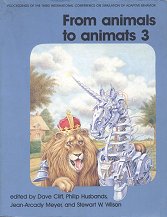
The contributions illustrate the diverse and interacting notions that chart the evolution of the idea of the mechanical mind. They describe the mechanized mind as, among other things, an analogue system, an organized suite of chemical interactions, a self-organizing electromechanical device, an automated general-purpose information processor, and an integrated collection of symbol manipulating mechanisms. They investigate the views of pivotal figures that range from Descartes and Heidegger to Alan Turing and Charles Babbage, and they emphasize such frequently overlooked areas as British cybernetic and pre-cybernetic thinkers. The volume concludes with the personal insights of five highly influential figures in the field: John Maynard Smith, John Holland, Oliver Selfridge, Horace Barlow, and Jack Cowan.